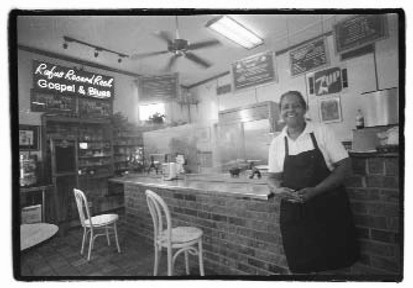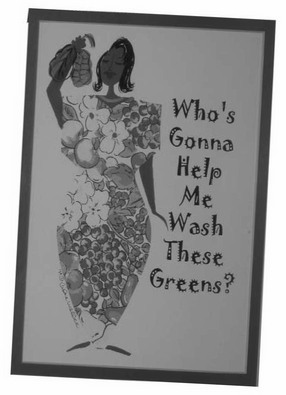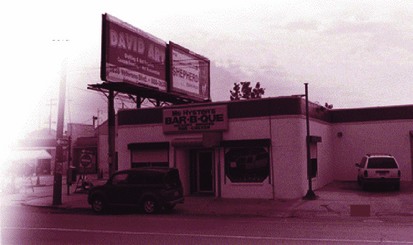“GRANDMA HAD THE DEACON’S FAMILY OVER FOR DINNER EVERY SUNDAY,”
says Virginia Johnson.
“As a girl growing up in Centerville, Mississippi, I would help my mother and grandmother out in the kitchen. I would watch them cook. They didn’t use recipes. They would reach for this and that. They didn’t measure ingredients, but knew exactly the right amount to put in. They would let me help out and give me specific instructions, like exactly how many times to beat the batter. When I started baking on my own, I tried to copy them, with mixed results. They could always tell exactly what was wrong. ‘Too much lemon shavings, not enough sugar, a pinch more baking powder...’ It was very frustrating, because they never wrote anything down, but now, I’m the same way. You can call it a gift, but I worked very hard to acquire it.”
It was an irrefutable fact that the Hyster women could cook, and after much encouragement, they opened up a restaurant 150 miles down the road in New Orleans, a city renowned for its food. Hyster’s Bar-B-Que opened its doors in 1972.
“They went there to make money, but they never left Centerville. That was always home, and they would return every weekend.”
At that time, Virginia had started studying political science—first at Southern University, then Atlanta University for a master’s degree.
Always fond of school, she embarked on a fifteen-year teaching career and was contemplating law school, but jurisprudence’s loss was culinary’s gain, for the pull of the family and her gift for cooking proved too great.
Nothing could stop her from her calling—not even Hurricane Katrina, which came through, broke the levees, and washed her beloved business and town away.
“There was no question about re-opening. I came back and worked twelve to fifteen hours a day for two months. During that time I refused to listen to the news. It was just too depressing. To get through we only played spiritual music.” (Image 77)

Image 77
At the time of publication, the surrounding neighborhood still had a long way to go, but it is slowly coming back. Hyster’s is literally a beacon of hope. It is an actual living, breathing museum of antiques and African-American artifacts. A place where the neighborhood can go to be reminded of what it was like and, with love and hard work, can become again. (Image 78)

Image 78
VIRGINIA JOHNSON’S GREENS WASHING TIP
Washing greens is serious business at Ms. Hyster’s Barbecue in New Orleans. Virginia washes at least six dozen bunches a day and is vigilant about her process.
Greens are funnel shaped, and as they emerge from the ground, they scoop up a lot of soil. Also, insects find their dense, leafy foliage to be a safe haven.
First Virginia “picks ’em” by removing the stems. Then she fills three large basins with cold water. She puts a tablespoon of salt in the first one (she says that the salt brings the bugs to the top), all the while working the greens with her hands.
She then moves them to the second sink, where the remaining grit and excess green pigment gets washed out. By the time she moves them to the third sink, the water should be crystal clear.
Most kitchens have dual sinks, so after that first washing with salt, empty and replace the water with fresh cold water. By the time the greens hit the second sink (third dunking), the water should have that crystal clarity so important for proper greens preparation. (Image 79)

Image 79: Ms. Hyster’s Bar-B-Que 2000 South Clairborne Avenue • New Orleans, LA 70125 • (504)522-3028